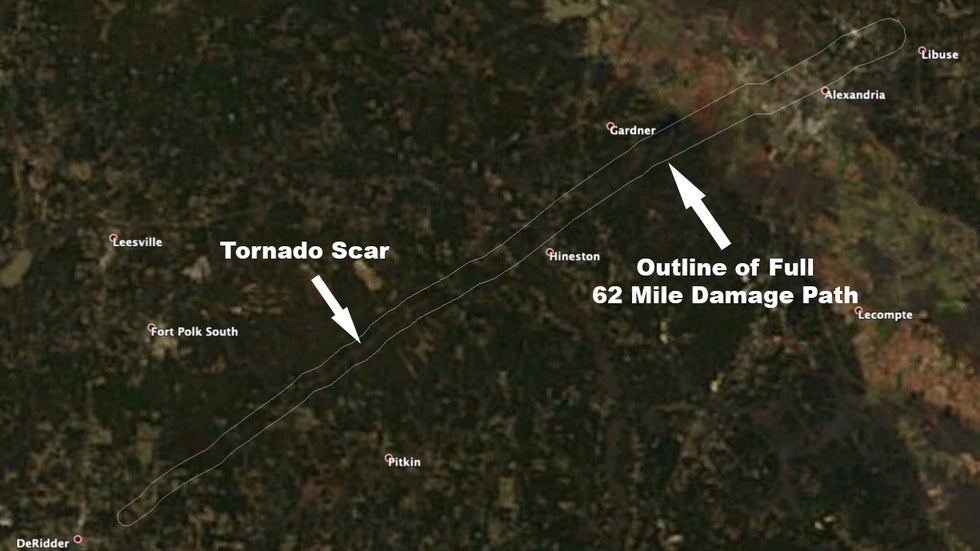Above is a comparison of satellite images from before the tornado struck on Dec. 11, 2019, and after the tornado on Dec. 18, 2019. The white arrows point to the scar caused by the tornado in a heavily-forested area.
Monday's deadly long-track tornado in central Louisiana tore through a dense forest damaging trees so severely that a scar can be seen in new satellite images.
The tornado began near the town of DeRidder and tracked for 62 miles before dissipating in Pineville, just east of Alexandria. It was on the ground for 1 hour and 50 minutes and reached a maximum intensity of EF3 twice along its path. One person was killed near DeRidder where the tornado first began.
Intense tornadoes that remain on the ground for a long distance have a higher chance of producing a damage path that's visible on satellite. That is particularly true in regions like the South where dense forests exist.
When many trees are damaged or destroyed by a tornado, the twister's narrow path can stand out on satellite next to the trees that remain standing. This is evident in the comparison using NASA Modis satellite images above. The arrows in the image from Dec. 18 point to lighter shadings representing downed trees in the tornado's narrow path. This stands out in stark contrast to the deep green of the same trees in the image from Dec. 11.
Below is another view of the scar with an overlay of the tornado's full damage path from the National Weather Service survey. A portion of the forest scar is in southeast parts of Fort Polk Army Base.

Earlier this year on March 3, the path from a tornado which tracked nearly 69 miles through eastern Alabama and western Georgia could be seen in NASA Modis satellite imagery. That tornado reached a maximum intensity of EF4 in Lee County, Alabama, where it killed 23 people
One of the most notable examples is a tornado that struck northern Wisconsin more than a decade ago. Its path is still easy to spot, particularly in winter, when there is a contrast between snow on the ground and the surrounding forest that remains.
The Weather Company’s primary journalistic mission is to report on breaking weather news, the environment and the importance of science to our lives. This story does not necessarily represent the position of our parent company, IBM.
The Weather Company’s primary journalistic mission is to report on breaking weather news, the environment and the importance of science to our lives. This story does not necessarily represent the position of our parent company, IBM.

No comments:
Post a Comment